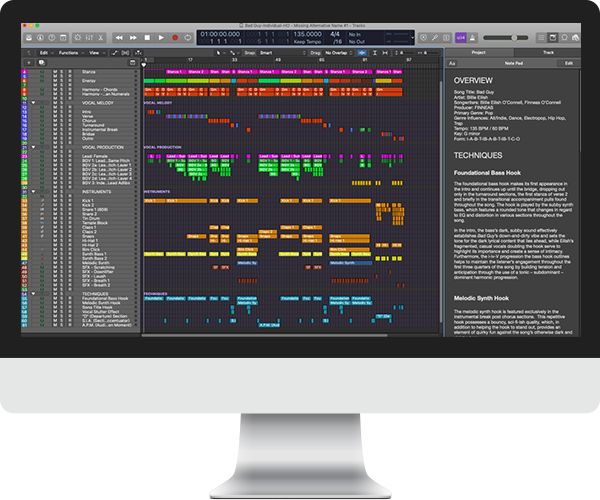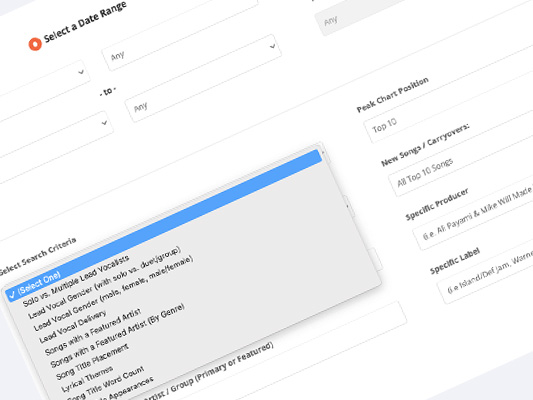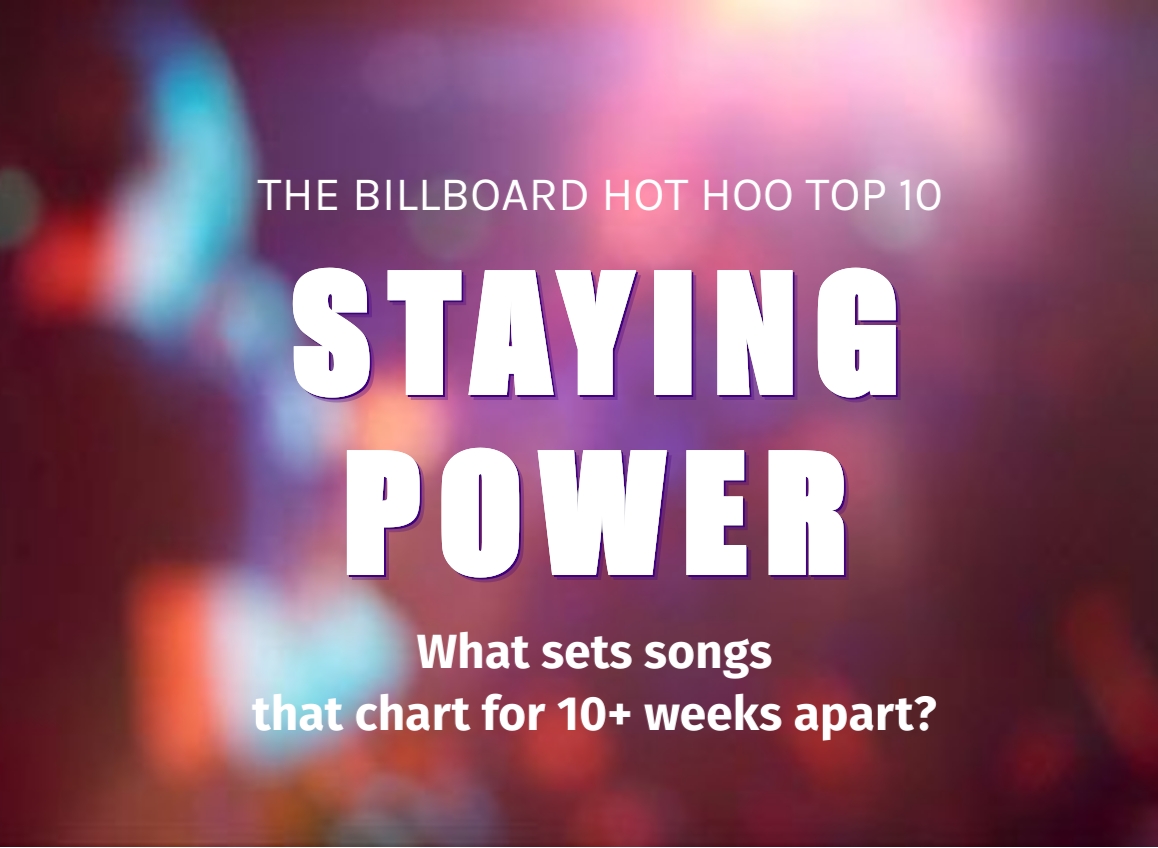What's the secret behind "greedy's" meteoric rise to the upper echelon of charts worldwide? It all comes down to the song's abundance of irresistibly catchy and strategically arranged hooks!
McRae and her team of hitmaker collaborators including Amy Allen, Jasper Harris, and Ryan Tedder, masterfully transformed simple, easy-to-connect melodies into standout hooks using tried-and-true "hook dressing" techniques. These techniques include leveraging the song title; incorporating two standout statements; infusing fun, nonsense lyrics, employing repetition (the HSD "say it again" technique), and integrating unique timbres.
In addition to their skillful deployment, the song's catchiness and memorability are heightened further through clever hook foreshadowing and creative reinforcement techniques, ensuring that "greedy" not only leaves a lasting impression but also avoids overstaying its welcome.
What follows is an inside look at “greedy’s” masterful hook arrangement, from intro to outro.

Sectional Progression #1: Intro (I), Verse 1 (A1), Chorus 1 (B1)
Intro
In the opening moments of "greedy," the initial hook that catches the listener’s ear features a percussive, pitched, handpan timbre. The hook’s simplicity and unique quality not only draws the listener in from the very start but also serves as an instantly recognizable calling card for the song. As soon as one hears it, they know exactly what song it is.
Verse 1
However, there's more to the handpan hook than what initially meets the ear. It cleverly plays a dual role by foreshadowing and subsequently reinforcing elements of the verse melody, where it’s featured in tandem with McRae’s lead and complementing low-level processed vocal. This clever technique makes it easier for the first installment of the narrative to connect while keeping the hook melody in the listener’s ear.
Chorus 1
With the handpan hook acting as a consistent thread across sections, the ensuing chorus presents not one, not two, but three new vocal hooks. The first is the bold, standout statement "I would want myself," which is primely placed at the top of the section. Serving as the song’s primary vocal hook with its egocentric, empowering quality, it is subsequently reinforced melodically on every other line but with different lyrics, striking an effective balance of freshness and familiarity.
The second line in the chorus, "baby, please believe me," may seem lyrically unremarkable, yet it plays a vital role in melodically and rhymingly foreshadowing the song title hook, "baby, don't get greedy," which emerges later in line 6. Complementing this is the newly added synth “nano hook,” which provides the section with a catchy, atmospheric embellishment, and foreshadows and subsequently reinforces the song title hook’s melodic shape.
Lastly, the chorus concludes with the lyric, "that sh*t won't end well, end well," another standout statement that employs the commonly used "say it again" repetitive "hook dressing" technique, as Hit Songs Deconstructed calls it.
In summary, the chorus is a bonified hook fest, strategically introducing and reinforcing hooks as it progresses to ensure that the song’s primary “hook center” gets firmly ingrained in the listener’s head.
Sectional Progression #2: Turnaround Post-Chorus (T PST), Verse 2 (A2), Chorus 2 (B2)
Turnaround
Following the super-catchy, dense, and energetic chorus, a brief one-bar turnaround with a breakdown arrangement is employed to bring things back down, give the listener a breather, and provide room for the song to build once again. However, it also uniquely features a new nonsense vocal that cleverly reinforces the handpan hook melody and aspects of the verse 1 vocal while simultaneously foreshadowing McRae’s verse 2 vocal.
Verse 2 & Chorus 2
The subsequent verse 2 and chorus 2 sections feature the same hook structures as their first occurrence counterparts, fostering familiarity within the song. Balancing this are verse lyrical developments and instrumental variations, which serve to heighten interest as the song progresses.
Sectional Progression #3: Verse 3 (A3), Chorus 3 (B3), Outro Post-Chorus (O PST)
Verse 3
The third and final sectional progression in "greedy" begins with verse 3, serving as the song's primary "D" (departure) section in lieu of a more conventional bridge (it features the same core vocal melody as the other verse sections but with differentiated accompaniment and lyrics). In contrast to the other verses, the processed vocal hook reinforces aspects of McRae’s vocals as opposed to the familiar handpan hook, which plays a differentiated pattern. This strategic decision was warranted to both heighten the impact of the departure while preventing the familiar handpan hook from becoming overly redundant in the scope of the song.
Chorus 3 and Outro
The ensuing chorus revisits the familiar hook structure of its earlier counterparts, a best practice that ensures it fully connects, resonates, and is remembered. The outro then follows with a unique, yet familiar, hook pairing, known as the Hit Songs Deconstructed “Grand Finale Hook Fest” technique.
With the handpan hook providing familiar accompaniment, the chorus standout statement, "I would want myself," is cleverly echoed as a background vocal. Compared to the chorus, it is uniquely delivered with a rhythmically displaced approach that traverses the stereo field, providing the outro with additional production ear candy as it is further reinforced with the listener. Midway through the section, a single instance of the proper "I would want myself" vocal resurfaces, further reinforcing its presence and enhancing engagement within the otherwise repetitive section.
The final hook heard in "Greedy" is the nonsensical "uh" hook, initially introduced during the brief turnaround. In the outro, it stands alone without any accompaniment, emphasizing its distinctiveness and connection with the listener. The hook cuts off abruptly at the tail end of the song, leaving the listener with a sense of anticipation and most notably, a likely longing for more.
Subscribers can read this technique and an array of others in the Hit Songs Deconstructed Technique Library here.
Not a subscriber? Click here to sign up today!
EMPOWER YOURSELF
with interactive resources and tools that
support your creative process and help you compete at the highest level.
SPECIAL OFFER: Save 15% off Hit Songs Deconstructed!
Use discount code "CREATE" to save 15%.
Used By:












“
I find the site VERY valuable. I’m a fan.
Eric Hurt
VP, A&R Publishing / Nashville at EMPIRE
“
Spot on with the analysis and relevant to any music theory, composer, songwriter, or producer in the game now.
- Dr. O
Producer, Young M.A., Chris Brown, Lil Wayne
“
"Even though I’ve been writing professionally for over ten years, I’ve found several nuggets of gold that have improved my writing already."
Roy Stride
Hit Songwriter, Producer, Artist
One Direction, 5 Seconds of Summer, Scouting for Girls
“
My entire thought process as a producer, an engineer, a musician, and a songwriter are fleshed out in the pages of the HSD reports.
Prince Charles Alexander
Grammy winning, multi-platinum music producer, mixing engineer
and professor at Berklee College of Music
“
Some producers have a hit or two by sheer fluke/talent and the subconscious knowledge of a lifetime of growing up with music. However, making hits songs consistently is not just about talent and the occasional fluke. There is a science to the art of making hit music.
Hit Songs Deconstructed will equip you with tools that will allow you to make hit songs more consistently.
Lyburn Geldenhuis
A&R/Producer/Songwriter/Mixing Engineer
“
ASCAP aims to provide members with a multifaceted toolchest to augment their craft and their careers. Hit Songs Deconstructed is a cutting-edge service that can support our members' creative process with in-depth data and analysis of current songwriting techniques.
Nick Lehman
ASCAP Chief Strategy & Digital Officer
What Does a Pro Subscription Include?


Hit Song Deconstructions
A Library of 60+ Hit Songs Deconstructed Reports
The Hit Song Deconstructed reports provide unparalleled analysis of today's hits.
Each deconstruction breaks down a current hit to its foundational building blocks and pulls back the curtain on the patterns and science behind how the song was written, produced and arranged.
Leaving no stone unturned, everything is presented in a clear and concise manner and is complimented with unique Hit Songs Deconstructed visualizations that can be used to assess your own songs for strengths and weaknesses as well.
Among them are the HSD melodic parts tables and graphs, rhyme scheme tables, narrative structure tables, energy graphs, and more.
Each report is published in ten segments every two weeks, and analyzes structure, genres and sub-genre fusion, instruments and arrangement, energy and dynamics, vocal melody, vocal production, lyrics, and rhymes. The last segment features a top 10 benchmark and highlights the most important report takeaways.
By reading these deconstructions, you'll become privy to the same tools and techniques today's hitmakers are using.
The insight you'll gain will take your craft to the next level, guaranteed.
Downloadable DAWs
A visual roadmap for understanding how today's hits are arranged.
Every Hit Song Deconstruction includes a downloadable DAW project (Logic).
Using empty MIDI regions to visualize the instrumental arrangement, energy, vocal melody and production, structure, select techniques and more, these DAW projects provide you with a visual roadmap for understanding how today’s hits were effectively arranged.
By watching as you listen, you will gain valuable insight into the strategic decisions today’s hitmakers made to help prime their songs for maximum impact, giving you a host of new tools, techniques, and ideas to help take your own songs to the next level.

Fuel Your Inspiration with a Library of 100+ Hit Song Techniques
Hit-Scope: A Searchable Library of Songwriting Techniques
Fuel your inspiration with the techniques that helped today’s most successful songs become global hits!
This extensive collection houses examples of the most effective techniques found in Hot 100 top 10 hits spanning various genres.
Every Tuesday, you’ll receive an expertly curated technique that has been deconstructed by the Hit Songs Deconstructed team to study. Each technique is accompanied by a detailed explanation, visual aids, and audio clips revealing the what, the why, and the how behind them.
It's the perfect way to continuously hone your craft and incorporate techniques from current chart-toppers into your own music.
Techniques include: Hook Techniques, Intro Techniques, Outro Techniques, Duet/Group Lead Vocal Structure Techniques, Audience Participation Moment Techniques, Energy Techniques, Section Impact Accentuator Techniques, Sub-Genre Fusion Techniques, Chorus Vocal Structure Techniques, Departure Section Techniques, Prosody Techniques, and Rhyme Techniques (with more technique categories to come!)
Hit Song Search
200+ filters to find the exact song you are looking for with the click of a button.
Need reference tracks? Mix and match 200+ compositional filters to find Hot 100 Top 10 songs with very specific compositional characteristics.
In addition, this tool can be used to:
- See how your song stacks up against proven hits with similar compositional characteristics
- Get insight for ways to take your song to the next level and/or give it a unique spin
- Understand the space you are looking to compete in
- Or simply get inspired!


Search Filters include:
Unlike AI-Powered analytics, each song is manually analyzed and every data point is vetted in accordance with HSD's proprietary methodologies for accuracy.
Compositional Analytics
Round out your toolbox with songwriting analytics for today's most successful songs.
Looking for insight into what today's hits have in common? Or want to spot trends on the rise, or in decline? Or need to back up gut feelings with factual data?
This powerful, fully interactive database provides you with critical insight into how the current musical landscape is evolving with valuable, real-time intelligence on the compositional characteristics of the songs that land in the Top 10 of the Billboard Hot 100.
Hundreds of different searches keep you in tune with what’s driving the Hot 100 Top 10 at the compositional level. Trends are visualized with graphs and tables with each data point linking to a list of the corresponding songs.
Search for trends pertaining to primary genres, sub-genres/influences, instruments, lead vocals (gender, vocal delivery, etc.), lyrics (lyrical theme, title placement and appearances, etc.), song structure (key, tempo, song length, song form, etc.), song sections (intro characteristics, first chorus occurrence, post-chorus types, etc.), and much more.
Save your most important searches to your dashboard for easy access!

Benchmark Tool
Compare and contrast compositional characteristics across songs, artists, songwriters, producers and labels.
This powerful tool gives you the ability to compare and contrast any of the compositional characteristics in The Immersion Database across songs, artists, songwriters, producers and labels.
- Gain insight into a specific body of work of a particular artist, songwriter, producer or label
- Understand what compositional characteristics a select group of songs have in common
- Discover how songs stand out from the pack by going against the grain
- Make targeted pitches by researching what creates the signature sound of a particular artist, producer, or songwriter

Trend searches include number of songs in the Top 10, weeks in the Top 10, trends for featured artist, genre breakdown, team size, and more.
Searches can be filtered in a multitude of ways including by date range, primary genre, peak chart position, among others.
All search results include links to the corresponding songs and profile pages.
Artist, Songwriter, Producer and Label Database
Stay in tune with the artists, writers, producers, and labels behind today’s hits and the trends behind them.
Every artist, songwriter, producer and label has its own personal profile detailing which artists, songwriters, producers and labels they’ve collaborated with, their compositional profile, charting information and a link to their Twitter and Instagram pages.

Hit Songs Deconstructed Trend Reports
The State of the Hot 100 Top 10 Delivered to Your Inbox
Today’s hits are changing faster than ever, from the songwriting and production techniques used to craft them to the influences and instruments shaping their sound. To stay ahead of the curve, it's critical to proactively stay on top of what's driving today’s most successful songs at the compositional level. The Hit Songs Deconstructed trend reports deliver an easy-to-digest snapshot of the trends driving the Hot 100 top 10.

A deconstruction of the most recent quarter's new arrivals, and how they differ from the songs that carried over from the previous quarter.

This report delivers an in-depth look at trends for all the compositional categories we track, including primary genres, sub-genres, lead vocals, lyrical themes, instruments, key, tempo, song length, song structure, and much more.

A deconstruction of the compositional characteristics that are unique to #1 hits.

A deconstruction of the compositional characteristics that are unique to songs that chart for 10+ weeks in the top 10..
“
I can't stress enough how important HSD is to any serious professional hit songwriter.
Hilton Wright II
Record Producer/Songwriter
“
As a songwriter, an important part of my job is to analyze what works in successful songs. By identifying the tools that were employed in hits, writers can incorporate them into their own songs--using techniques that have proven successful--while putting their own spin and unique creative angle on them. HSD does the research for me.
- Jason Blume
Songwriter w/50 million album sales and top-selling author, Billboard Books
“
I am honestly blown away by the amount of information you provide on each of these songs, practically like a thesis deserving of a degree. From a songwriting standpoint, so much of this information is so helpful, and the time-saving benefits are enormous.
- KC Porter
Grammy winning producer/songwriter/recording artist
Carlos Santana, Ricky Martin, Ozomatli, Boyz II Men, Selena


